Crapshoot: Sega's awful holographic arcade game
We're rerunning Richard Cobbett's classic Crapshoot column, in which he rolled the dice and took a chance on obscure games—both good and bad.
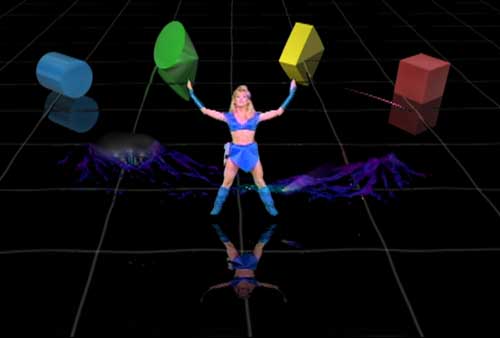
From 2010 to 2014 Richard Cobbett wrote Crapshoot, a column about rolling the dice to bring random obscure games back into the light. This week, quite possibly the fastest flame-out ever—an arcade sensation without a ghost of a chance of being brought back.
There's been a lot of talk lately about 3D, of Oculus bringing back virtual reality, of Retina displays and CAVEs and even talk of Microsoft patenting the first holodeck. Will they make a difference? Perhaps. But as fun as it is to look to the future, I can't help but remember the arcade cabinet that made the mayfly-lifespan of original VR seem like having to watch a documentary on whelk farming on the first day of summer. Saddle up, cowboy. We're off for a gunfight at the Not Even OK Corral.
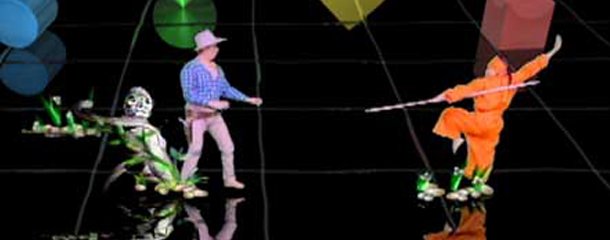
Now, I know what you're thinking. "What the hell?" you demand. "An arcade game? Have you gone insane, you deluded arse? This is PC Gamer, not... not... does Arcade Weekly exist? Whatever. This is not the place for such off-topic blatherings!" And, in a certain sense of things, you'd be right.
However! While I don't think it was a big seller, for reasons that will become clear soon enough, there was actually a PC version of this game, along with a DVD version made for consoles that could play such things. So, hah! I dance the dance of victory at your imagined mocking, including the really difficult bit with the balloon animals, cheese dip and naked somersaults!
Many games like this ended up being directly ported to PC, but separately made available on DVD so they could run on consoles too (and with the advantage of not having to officially go through Microsoft/Sony and thus give them a cut). I own a couple—Space Pirates and Who Shot Johnny Rock being the funniest—and can safely say that the only kind of game that DVD really does well at is Frisbee. It's about the worst possible format for playing a game on, with every interaction or even interaction point freezing for a noticeable movement, animations and controls being poorly synced, and really driving home just how primitive these things are. Still, I suppose it does vaguely work if you absolutely must play some style-over-substance piffle and have no standards whatsoever.
Myst fans for instance will probably love it.
A bit more on the home version later. Hologram: Time Traveller was something of a prestige game for arcades, often sitting alongside an expensive VTOL unit that would let kids pay about £2 for the chance to put on a helmet, look around a blurry, low-polygon world, and immediately crash. At least, this was my experience. Maybe I just wasn't ready to enter that level of reality.
The biggest gaming news, reviews and hardware deals
Keep up to date with the most important stories and the best deals, as picked by the PC Gamer team.
Looking back, especially if you're young enough not to remember rushing home from school to watch Knightmare and being terrified of the wall monsters, it might be tough to appreciate just how exciting arcade games were—even the crap ones. Let me put this into a little historical context.
This was 1991, just after the decade in which a dancing flower was considered awesome and the average home computer arcade game was lucky to look like Altered Beast. Geek-friendly stuff wasn't cool yet, but elements of it were slowly creeping in. Often, very weird ones. In 1992 for instance, the BBC created the world's strangest Saturday morning magazine show—Parallel 9, set on an alien penal colony, starring an old prince who somewhat creepily kidnaps an Earth girl in her sleep, gets trapped in the Phantom Zone by the Milkybar Kid and a group of Jawas, and is only allowed out to interview pop stars and introduce a kids' version of The Toxic Avenger. A job it should be noted that he arrives to looking like one of those Jawas is giving him an invisible off-screen blowjob. When people found this 'unusual', the BBC compensated by adding a coat of paint and a talking dinosaur called Brian.
These were strange, strange times. Then the word 'cyber' became hip, and the next few years became very, very painful for everyone. Oh, the horrible, horrible memories...
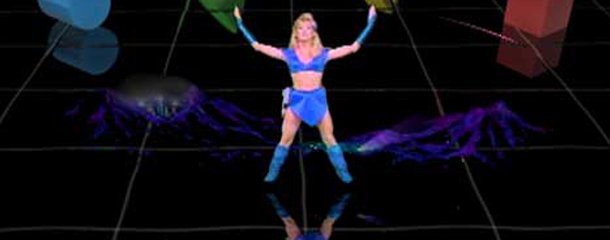
Arcades on the other hand were still exciting. Home computers mostly sucked, especially for arcade-style games, while these noisy worlds had huge displays, laserdiscs, epic adventures with actual actors running around and fighting, glorious animation, and everything else a kid could want to see.
Most games could draw something of a crowd, especially when everyone realised the person playing wasn't just on the first level, with stuff like Street Fighter 2 obviously becoming the big spectator draw. FMV/animation games like Dragon's Lair, Mad Dog McCree and Space Pirates were just as popular though, even if they weren't very good as raw games . You'd watch just to see how far the person playing could get—which usually wasn't very, as they were brutally unfair and over-priced. A fairly typical git-move would be having a character fall to the floor after you shot him, seemingly dead, only to suddenly raise his gun and shoot from the floor. They were memory tests, really. Still, they were huge.
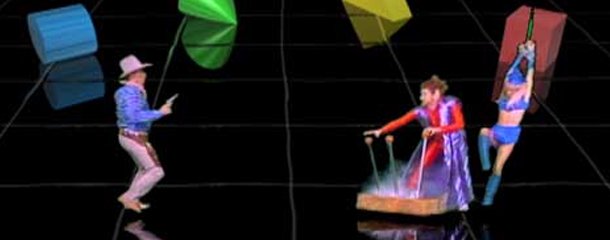
Hologram largely missed out on this though, thanks to its gimmick. It was designed by Rick Dyer, co-creator of Dragon's Lair and whose name also conveniently describes at least this part of his CV. It consisted of a big, futuristic-looking white cabinet that would stand very prominently in the arcade... but unfortunately had to cover the action with a dome. It was essentially a hidden TV monitor and a concave mirror, which refracted the light to make it look like the characters were little holographic projections. The only catch was... well... look at it. And it wasn't much more gripping in motion.
Here's a hilarious attempt to make it look like more than an amateur dramatics revue at your local village hall. Can't you just feel the gravitas? The authenticity? It's like you're really there!
The plot is your typical 'save the princess' fare, with temporally displaced cowboy Marshall "I See What You Did There" Gram having to travel through seven timezones differentiated only by the props in his inky black universe, and the player having to hit the right buttons to avoid watching expensive death sequences. A gaming classic this was not, especially at a squillion pounds a go.
I remember it being about that, anyway. At least in kid-in-arcade money.
In fairness, Hologram did land just before Mortal Kombat made a big thing out of controlling real people, so that part was still fairly neat. It was however almost 10 years after Dragon's Lair had done exactly the same basic action, and even that game's own sequels—Space Ace for instance, not to mention other attempts like the Lupin III rebrand Cliff Hanger—hadn't done very well. Everyone realised that all you were doing was pushing right when the game went 'push right', to the point that the only people who really played them were the ones showing off they could finish in a single credit, or kids who didn't know any better. Here, there wasn't even the curiosity of seeing what came next and what weirdness would unfurl. It would be a blurry cowboy shooting a blurry Whatever on a black background.
Oh. In front of 3D primitives, of course. Spinning 3D primitives... OF THE FUTURE!
So, yeah. It's not too surprising that while it got a lot of attention for about five minutes, everyone quickly walked off in search of something more fun. As far as I know, Sega only tried this idea once more, in a game that would be completely forgotten if it wasn't embarrassingly called "Holosseum".
While it's not a fair comparison and I really only do it to have an excuse to throw in a link, it's worth noting that the Painstation had a longer lifespan—and that was the version of Pong in a special cabinet designed to whip and burn your hands while you played it. Just saying, is all.
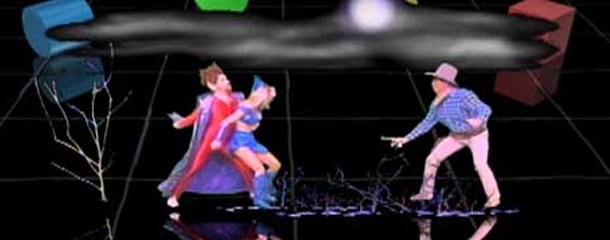
And so to the home game. What do you do when you've got a game that entirely relies on a funky, custom-built arcade cabinet for any interest whatsoever? If there's any justice in the world, you sell about four copies—and those to internet reviewers who just want to make a video about them. Maybe it sold more, I don't know. Amusingly though, to compensate for the fact that without the gimmick, this is one of the worst arcade games ever, it came packaged with 3D glasses and a special version of the footage that at least attempted to recreate the idea at home. It was not however renamed, presumably on the grounds that if the original wasn't a hologram either, it didn't matter that much.
The only real way to play it today, to whatever value of fun you'll get, is to find an actual arcade machine. Your best bet is at conventions, but if you want, at a pinch, you can try and track one down in the wild.
I suspect however that doing so will end up... wait for it... wait for it... a holo pursuit.
Ahem. This hand's not going to high-five itself, people.

